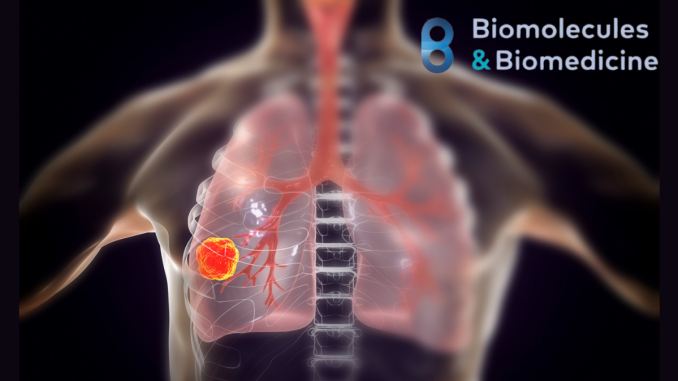
Lung cancer is the leading cause of cancer-related deaths globally, with nearly 2.5 million new cases annually. Non-small cell lung cancer (NSCLC) accounts for approximately 80%–85% of all lung cancer cases. Most patients are diagnosed at an advanced stage, where the 5-year survival rate is only 19%. Immunotherapy is now the standard first-line treatment for patients with driver-negative advanced NSCLC. However, its effectiveness is limited, partly due to the lack of precise markers for identifying patients who will benefit most from the treatment.
Currently, the most common biomarkers for predicting the efficacy of NSCLC immunotherapy, such as programmed cell death-ligand (PD-L1) and tumor mutation burden (TMB), are complex, expensive, and time-consuming, which limits their clinical use. Composite indicators such as hemoglobin, albumin, and platelet (HALP), neutrophil-to-lymphocyte ratio (NLR), and platelet-to-lymphocyte ratio (PLR) offer a cost-effective and easy-to-measure alternative. These indicators have been used to evaluate the prognosis of various malignant tumors.
Dr. Hui Su, one of the authors, stated: In our research, we gathered data from 203 patients with non-small cell lung cancer (NSCLC) who underwent immunotherapy. We measured hematological parameters such as hemoglobin, neutrophils, albumin, lymphocytes, and platelets before treatment, after two cycles, and after four cycles. Using specific formulas, we calculated HALP, NLR, and PLR. We also evaluated progression-free survival, overall survival, and treatment efficacy for all patients.
Our findings indicate that low HALP combined with high NLR and PLR correlates with a poor prognosis in patients undergoing immunotherapy for advanced NSCLC. These markers can help identify patients who are more likely to benefit from immunotherapy in clinical settings.
The translation of the preceding English text in Chinese:
肺癌是全球癌症相关死亡的主要原因,每年新增病例近250万例。非小细胞肺癌(NSCLC)占所有肺癌病例的80%–85%左右。大多数患者在确诊时已处于晚期,五年生存率仅为19%。免疫疗法现已成为驱动因子阴性晚期NSCLC患者的一线标准治疗。然而,其疗效有限,部分原因是缺乏精确的标志物来识别最能受益的患者。
目前,用于预测NSCLC免疫治疗效果的最常见生物标志物,如程序性细胞死亡配体(PD-L1)和肿瘤突变负荷(TMB),复杂、昂贵且耗时,限制了其临床应用。复合指标如血红蛋白、白蛋白和血小板(HALP),中性粒细胞与淋巴细胞比率(NLR)和血小板与淋巴细胞比率(PLR)提供了一种成本效益高且易于测量的替代方案。这些指标已被用于评估各种恶性肿瘤的预后。
该研究的作者之一,苏慧博士表示:在我们的研究中,我们收集了203名接受免疫治疗的非小细胞肺癌(NSCLC)患者的数据。我们在治疗前、两个疗程后和四个疗程后测量了血红蛋白、中性粒细胞、白蛋白、淋巴细胞和血小板等血液学参数。使用特定公式,我们计算了HALP、NLR和PLR。我们还评估了所有患者的无进展生存期、总生存期和治疗效果。
我们的研究结果表明,在接受免疫治疗的晚期NSCLC患者中,低HALP结合高NLR和PLR与不良预后相关。这些标志物可以帮助临床中识别更可能从免疫治疗中受益的患者。
Reference:
Hui Su, Chao Yu, Guiming Sun, Baozhong Wang, Yingjie Gao, Xiaolan Liu, Qingcui Song, Xuezhen Ma
Prognostic value of immunotherapy in advanced non-small cell lung cancer based on baseline and dynamic changes in hemoglobin, albumin, and platelets;
Biomol Biomed [Internet]. 2024 Jul. 14 [cited 2024 Jul. 24];
Available from: https://www.bjbms.org/ojs/index.php/bjbms/article/view/10833
More news: Blog
Editor: Merima Hadžić
Leave a Reply